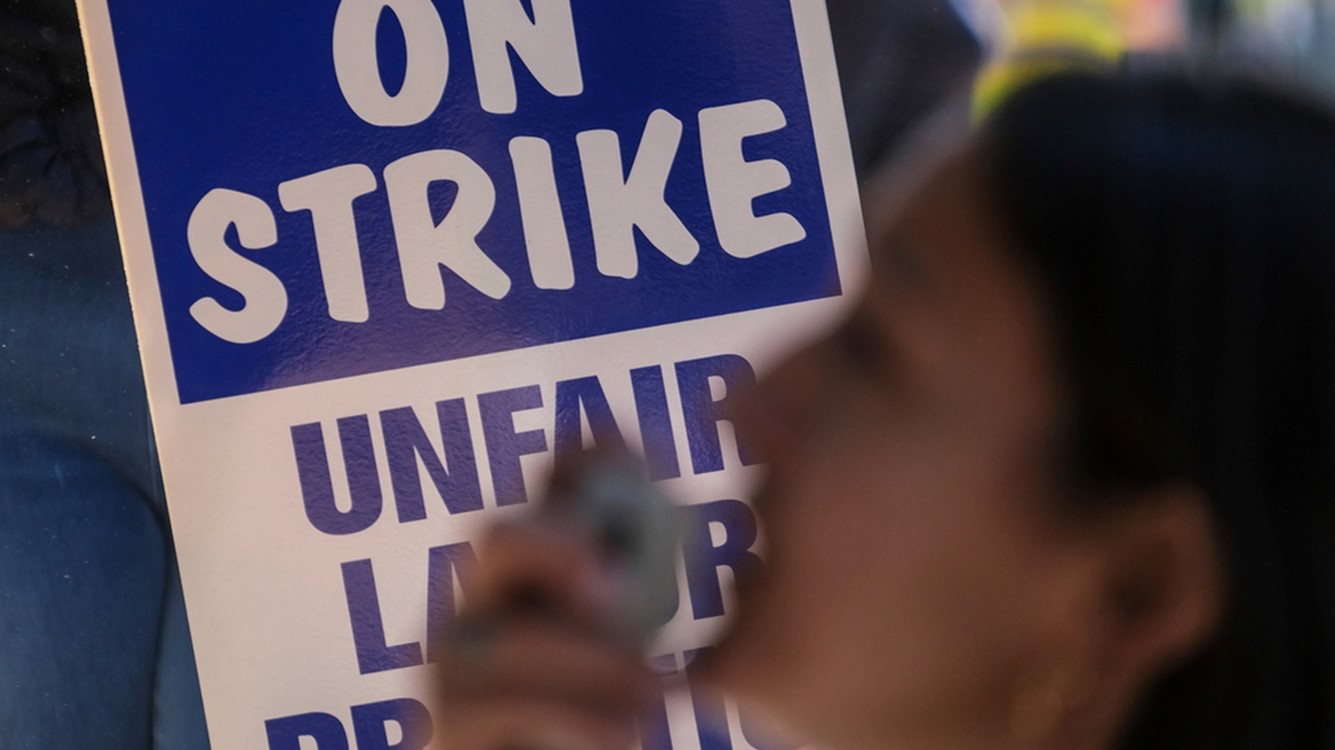Strikes suppress October hires
Leisure and hospitality, healthcare and education lead gains.

November 3, 2023
Payroll employment rose by 150,000 jobs in October, about half the downwardly revised 297,000 job gains in September. October tends to be a month when hiring in healthcare and the government, especially public education, tends to pick up. Public sector hiring accounted for 51,000 or more than a third of those gains, largely public education at the local level. Healthcare and private education accounted for 89,000 of the 99,000 gains in the private sector. Those two sectors tend to hire up in October. The gains were even larger prior to seasonal adjustment. Gains in employment this year have become more concentrated in less interest rate-sensitive sectors than we saw earlier in the recovery, when rates were near zero.
Hiring in the leisure and hospitality sector added 19,000, with all of those gains in accommodation. Food services lost employment during the month after making major gains over the summer. Professional and business services added 15,000 jobs during the month but the sector remains relatively unchanged since the spring; it is a sector that has been hit by the surge in interest rates. Hiring in the financial sector also weakened in October; commercial banking shed almost 6,000 jobs during the month. That reflects higher interest rates and the ongoing weakness in mergers and acquisitions.
Strikes were a major factor holding down job gains during the month. There were 48,100 workers out on strike during the survey week; over 30,000 included striking UAW workers, which have since come to a tentative agreement with the Big Three; another 16,000 were due to striking actors. The writers' union resolved a month's long dispute in late September, which enabled the return of late night and game shows in October.
Manufacturing employment dropped by 35,000 jobs; the bulk of that decline was in motor vehicles and parts and related to the UAW strike. Hiring in the motion picture and sound recording area fell by another 5,000 in October, despite the resolution of the writers' strike before the end of September. Hollywood strikes have shaved more than 44,000 jobs from that sector since early May when the strikes began.
The major loss was in transportation and warehousing, which lost 12,000 jobs. Again, the UAW strike likely exacerbated those losses, as they struck distribution centers for repairs parts. There were also seven layoff announcements and bankruptcies in the trucking sector during the month. Transportation was one of the leading sectors out of the pandemic and has been hit hard by the pivot to consumer spending in stores instead of online.
Average hourly earnings rose 0.2% in October, after rising 0.3% in September. That translates to a 4.1% gain from a year ago and marks a further slowdown from the red-hot pace we saw during the peak of hiring in 2022. Hours worked also softened, largely due to strikes and overtime in manufacturing. The earnings data was held down, notably by the actors' strike. Earnings flatlined in October in the information sector, after contracting in September, when writers and actors were on strike. That weakness should reverse once strikes are resolved. The wage gains in the UAW contracts were particularly large and could have spillover effects across the manufacturing sector.
Separately, the unemployment rate edged up a notch to 3.9% in October, for the wrong reasons. The rise in unemployment occurred despite a slight drop in the participation rate to 62.7% in October from 62.8% in September. The drop in participation was broad-based, with the exception of teens and Black women. The cyclical low was 3.4% in April. Strikers are not counted as unemployed, but those laid off due to strikes are. The ranks of those out of work due to labor disputes jumped to 96,000 in October, the highest level since August 1997 when UPS went on strike. Those who were forced to take part-time work for economic reasons rose in October, another legacy of strikes.
The ranks of those out sick and unable to work edged down in October but remain slightly above the levels we saw in 2010s. Those out on vacation climbed to 2.3 million in October, tied with October 2022. Only October 1993 was higher.
The ranks of workers out due to parental leave hit 606,000 in October; that is a new record for the series, which began in 2003. This is in part due to an expansion of parental leave in recent years and the ongoing crisis in childcare. COVID-era subsidies expired for many childcare facilities in October. That is an issue that is not likely to improve anytime soon for working parents. The childcare subsidies for low-income households expire in October 2024.
Finally, multiple job holders rose to 8.4 million in October, which now exceeds the level hit in February 2020 and is close to the pre-pandemic peak. The number of multiple job holders tends to pick up late in a business cycle as employers are more flexible and adjust their schedules to allow workers to hold more than one job.
The irony is that the more overall financial conditions ease, the more the Fed may have to raise rates again in 2024.
Diane Swonk, KPMG Chief Economist
Bottom Line
Employment cooled in October after being revised down over the summer. Strikes weighed heavily on private sector employment and took a toll on wages as well as hours worked during the month. There were also spillover effects for unemployment. We are seeing a pivot in employment gains from sectors that benefitted the most from reopening and ultralow rates to those that lagged earlier in the recovery and are less sensitive to interest rate shifts. Nearly 90% of job gains over the summer were concentrated in just three sectors - healthcare and private education, leisure and hospitality and government.
Financial markets rallied in response to the weaker jobs report and downward revisions to August and September. Those gains extended the rally triggered the pause in rates by the Fed in November. The irony is that the more overall financial conditions ease, the more the Fed may have to raise rates again in 2024.
Note: The response rate for the October survey dropped to 58.3%, the lowest for the month since October 2002. Only May had a lower response rate this year. That sets the stage for larger revisions.
Explore more

Job growth surged in September
Gains were concentrated in healthcare, leisure and hospitality.

KPMG Economics
A source for unbiased economic intelligence to help improve strategic decision-making.

Resilience, revisions & risks… Weathering political dysfunction & war
The bond market does the heavy lifting for the Federal Reserve.
Subscribe to insights from KPMG Economics
KPMG Economics distributes a wide selection of insight and analysis to help businesses make informed decisions.
Meet our team

